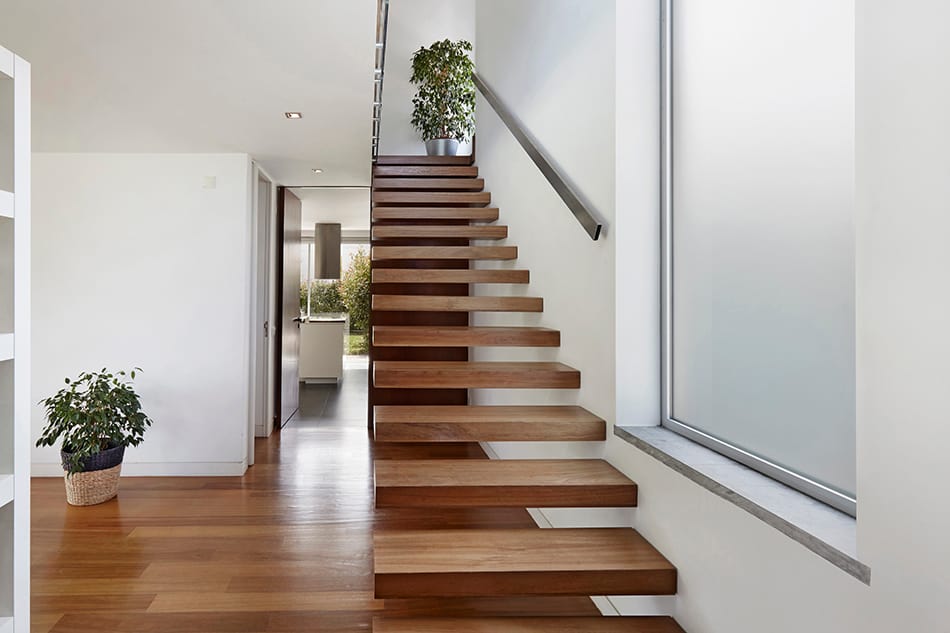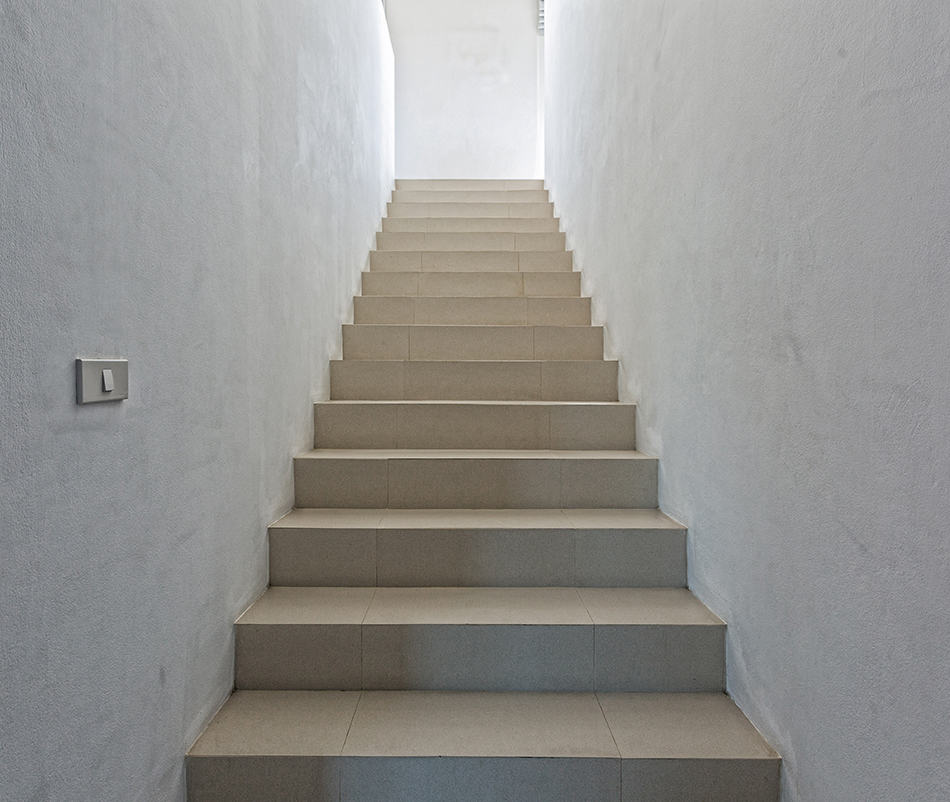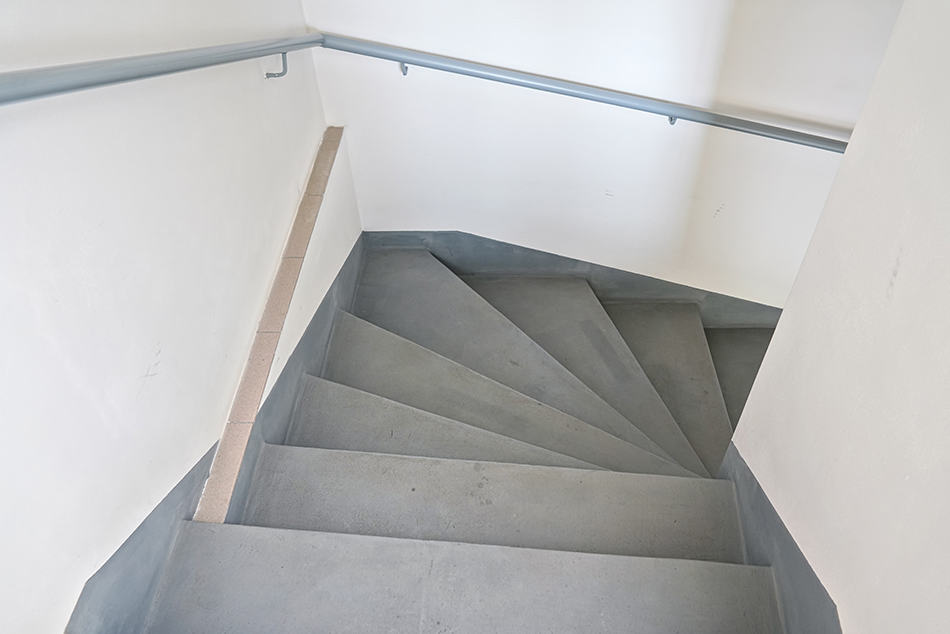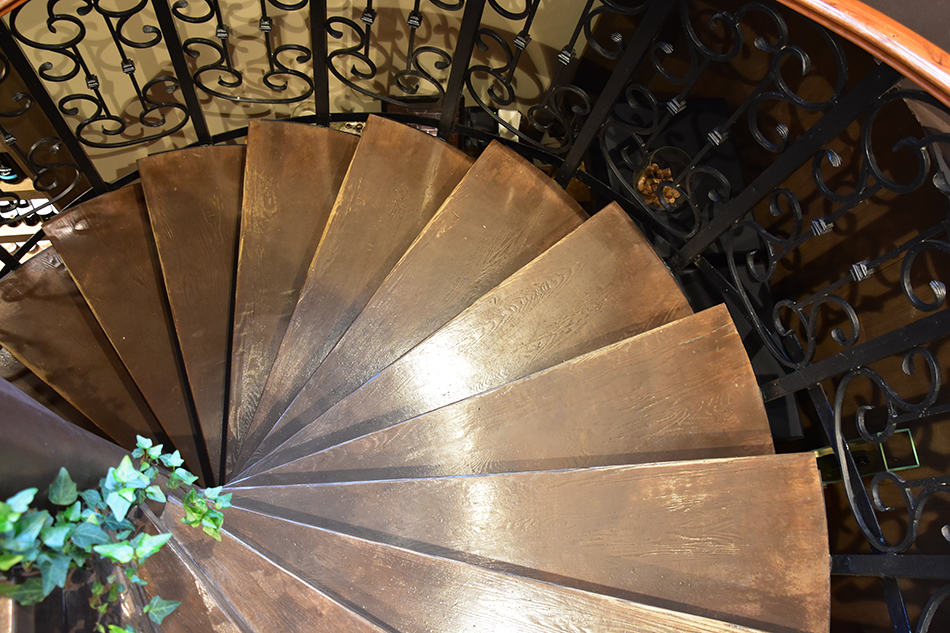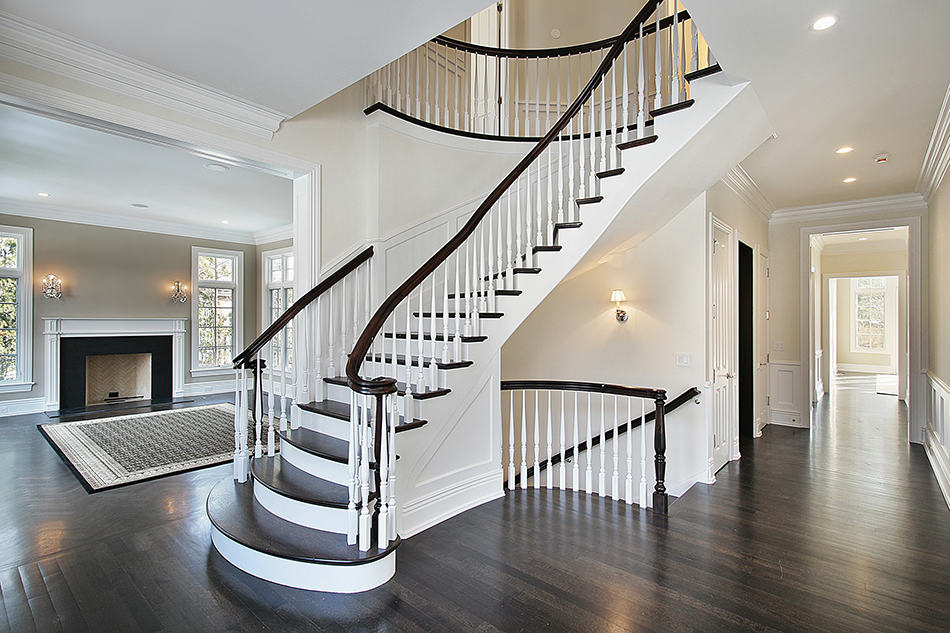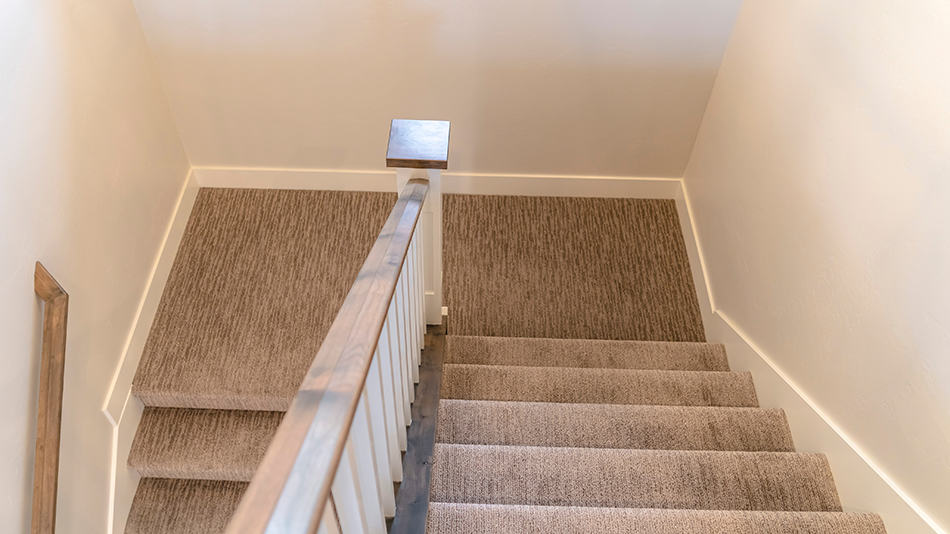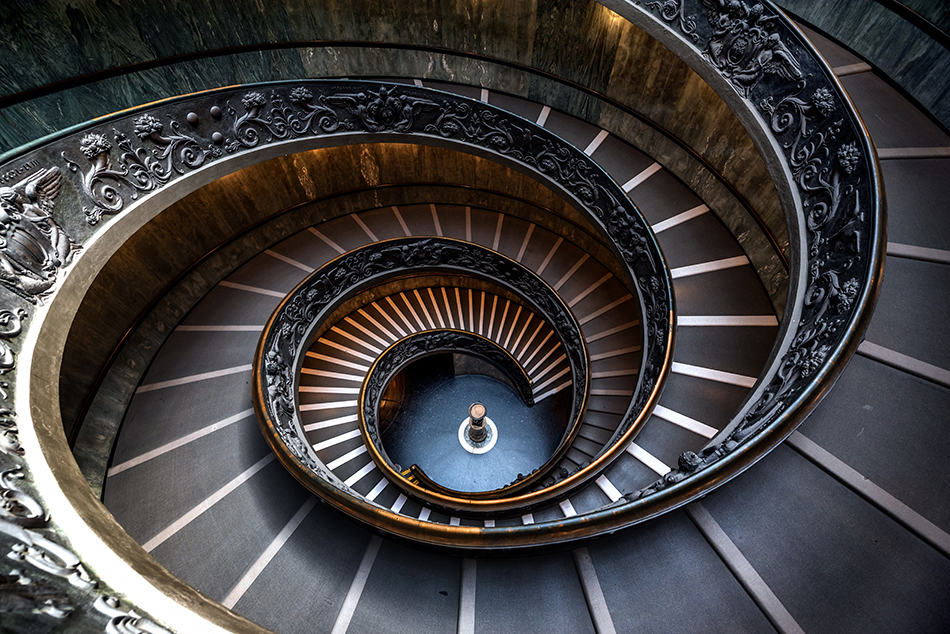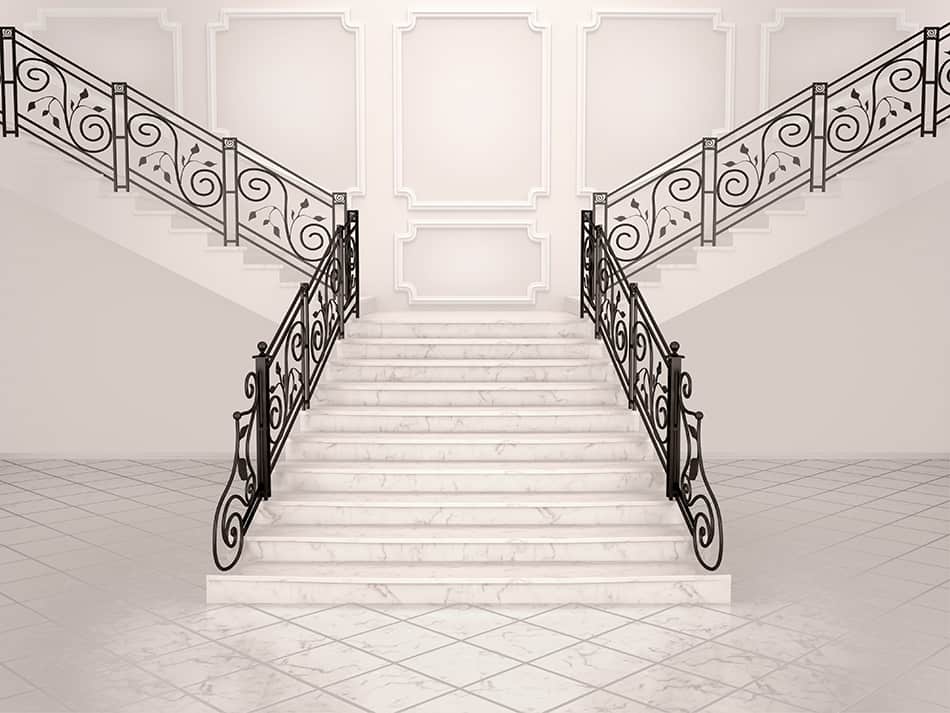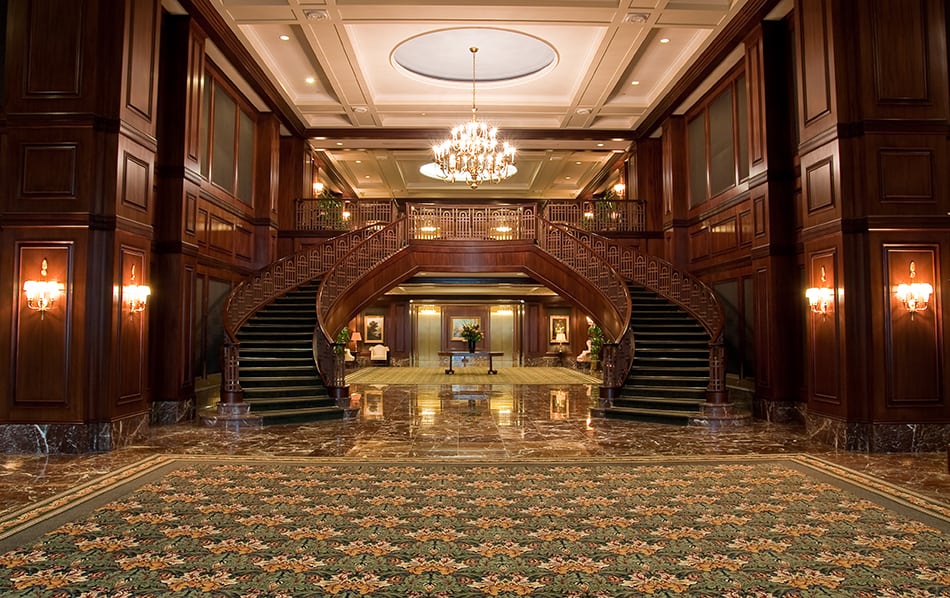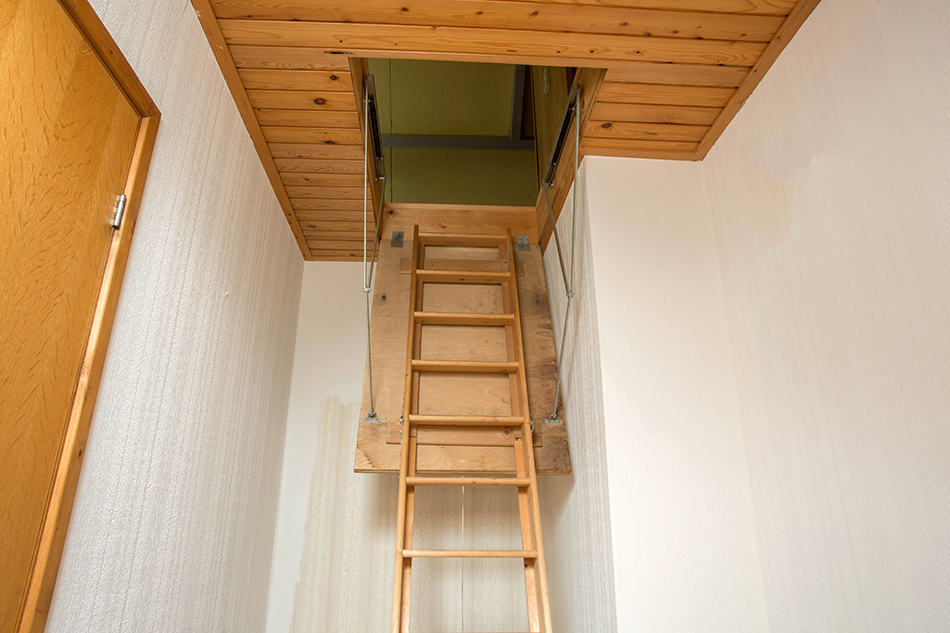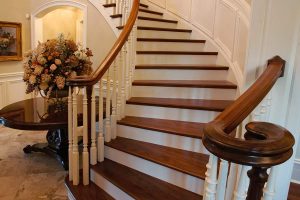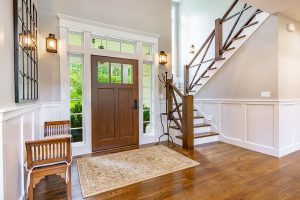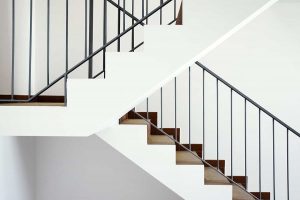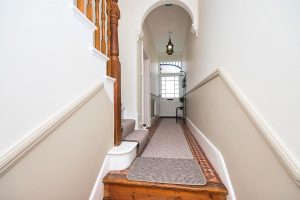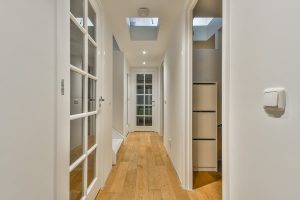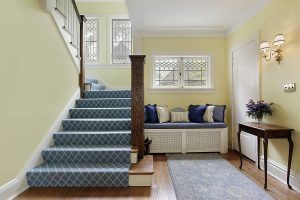The best way to fit more houses in a set piece of land is usually to build an extra floor – but before you can do that, you will need to figure out a way to connect the first floor with the top one.
At this point, many new and inexperienced house planners make one vital mistake: they assume that stairs can be just fit inside an empty room as an afterthought.
Nothing is further from the truth! Stairs come in very different models and construction types. The choice of staircase model will impact the amount of space that you devote to the stairs. In addition, it will also influence the overall look of the room, its ventilation, and even its safety.
So before you put off the decision any longer, join us in learning about the main parts of a staircase, then exploring the different types of staircases you can use in a home.
This quick guide will show you the main features that define each model, plus their relative advantages or weaknesses.
But First, Some Basic Vocabulary
In this guide, we will be discussing different architectural elements present in staircases. If you are completely new to interior design, the following vocabulary will be useful.
- The tread is the horizontal plank that makes up each step. When you go up or down the stairs, you usually step on top of the tread.
- This is the vertical plank that provides the height of each step
- These are the small, ankle-level railings that line the sides of a stair.
- This is the small “resting area” between two sections of the stairs, especially on bent stairs
- This is the long piece of wood that you are meant to hold onto while you are using the stairs
- Some stairs have a series of balusters, or vertical poles, that support the handrail.
- Essentially, the final baluster at the end of the staircase or by the landing.
10 Types of Staircases
The following are 10 of the most common staircase models. Keep in mind that almost all of them can be modified or adjusted according to the available space or any ongoing architectural trends.
1. Straight staircases
Straight staircases are the closes thing to “normal” or standard staircases. These are used to connect two floors in a relatively straight line, without any changes in direction. Because of this, they are very commonly used in homes and commercial buildings alike.
Usually, straight staircases do not require any landings. In very long flights of stairs – such as those in high-rise floor plans, a middle landing may be included to provide people with an opportunity to rest.
Pros of straight staircases
- They are simple, and once you figure they include, they are very easy to design and to build.
- If you get rid of the risers, they go very well with minimalist design styles.
- They provide an unobstructed view of the stairs themselves and the bottom floor.
- The space beneath straight stairs can be easily turned into a storage room.
Disadvantages of straight staircases
- They require a lot of linear space.
- They do not create a privacy barrier (unless other elements such as balusters or wood panels are added.
- According to most local building codes, if the height difference is above 12 feet, you will need to include a landing. This will make the stair longer.
2. L-Shaped staircases
L-shaped stairs are very similar to straight staircases, but they bend by 90 degrees at some point in their trajectory. This “bending point” is usually located mid-height and must be accompanied by a landing.
When the bend or corner created by an L-shaped stair is not located in the middle, these stairs may be called “long L staircases” or “quarter-turn staircases.”
Advantages of L-shaped staircases
L-shaped stairs can be easily fitted around the corner of a room
- If the bottom floor or room is not very long, L-shaped stairs are easier to fit.
- The corner area they create beneath the middle landing can be used for storage or a small reading nook
- The bend reduces the number of steps that you would fall in case you trip, especially when going down the stairs.
Disadvantages of L-shaped staircases
- They include more design elements and therefore require more thought.
- Most of the time, you will need a support column or beam beneath the landing. Because of this, they can make the bottom floor feel cramped.
- Handrails for L-Shaped staircases will require an additional newel and are harder to measure or calculate.
- They make it harder to transport very large pieces of furniture along with them.
3. Winder staircases
Winder staircases are commonly used in older homes and small townhouses. These staircases are essentially a modification on L-Shaped stairs meant to save space. Instead of a landing at the point where the stairs bend, winder staircases use differently-sized steps and treads.
Some of these treads may end up being wider, triangular, or pie-shaped. In this way, they can progressively bend the route of the staircase, transitioning into a new direction.
Advantages of winder staircases
- They are a great way to save space, especially if the bottom floor has no large rooms.
- They provide a cozy alternative for a secondary staircase.
- They can provide a very interesting look and allow you to play around with the design of the handrails or balusters.
Disadvantages of winder staircases
- The uneven length of the treads can cause accidents. This is why they are rarely used in commercial buildings
- The exact length of each tread, the rise elevation, and the spacing of each baluster may be hard to calculate.
- When not properly planned, Winder staircases may look awkward.
4. Curved staircases
Curved stairs can connect two floors at the same stair angle as an L-Shaped staircase. However, they do not have a landing or any sharp angles. Instead, the route curves slightly as it goes up, following a helical arc.
Curved stairs are often used in entrance halls or very “public” parts of a house (such as the foyer). They are also used in many commercial buildings.
Advantages of curved staircases
- They tend to look imposing and elegant, especially in vintage or historical buildings.
- They also provide a modern touch in more modern lofts or open-floor house plans.
- They provide a feeling of continuity between the two different floors.
- They are usually easy to navigate, as they prevent the long, straight falls of a straight staircase but without the unevenness of winder stairs.
Disadvantages of curved staircases
- They are very difficult to build.
- The length of each step and the radius of the curve need to be carefully calculated.
- They don’t create any private spaces beneath them.
5. U-Shaped staircases
Similar to L-Shaped staircases, U-Shaped staircases also bend right in the middle of the flight. However, instead of a 90-degree bend, they do a full 180-degree turn. A U-shaped staircase, also called a half-turn staircase, can also be described as two shorter flights of stairs, going in opposite directions and joined by a landing.
This type of stairs is typical of apartment buildings or of any tall buildings that need to join three floors or more continuously. This is because they can be joined with an unlimited number of extra stairwells without requiring any additional space.
Advantages of U-shaped staircases
- They are very easy to fit in the building plans, even for high-rise buildings.
- They offer a very steady rhythm and use constant tread and rise lengths, making them ideal for escape or emergency staircases.
Disadvantages of U-shaped staircases
- Although the dimensions can be repeated indefinitely, the initial calculations and measurements need to be very precise.
- In a tall building, U-shaped stairs usually block an entire section of the building.
- They allow noise to travel easily between floors.
6. Spiral staircases
These light, vertigo-inducing staircases use a much narrower helix than curved stairs. Usually, they manage to complete a turnaround themselves within floors. This type of stair is often made from lighter metal materials and added as an external attachment to a building rather than built inside it.
Advantages of spiral staircases
- They are light, and they take up very little space. See further about their sizes in our post on spiral staircase dimensions.
- They offer a good solution for fire escapes and emergency exits.
- They offer many opportunities for custom or original design
- They support themselves around the central pole without requiring additional beams or columns.
Disadvantages of spiral staircases
- They are difficult to navigate, especially for people who have vertigo or are afraid of heights.
- If they are very narrow and use floating treads without rises, it is also very easy to fall or trip on them.
7. Bifurcated staircases
Sometimes also known as Y-Shaped stairs, bifurcated staircases occupy a lot of space but produce grand results. These consist of a wide set of stairs in the center followed by a landing at mid-height. After the landing, they divide into two opposing staircases, located at a 90-degree angle from the central section.
This type of staircase is often featured in ballrooms, museums, and old palaces. It is also a favorite of hotels and event venues, as they provide a spectacular backdrop for a debutante or bride to show off her dress. On the other hand, they are very rarely seen in private homes.
Advantages of bifurcated staircases:
- In high-traffic spaces, they let people divide or separate, preventing overcrowding.
- They look fantastic when located in front of a large room’s main entrance
- They mix very well with old-world or vintage décor
Disadvantages of bifurcated staircases:
- They take up a lot of space
- They are complicated to design or to fit inside a room, and typically a lobby needs to be designed around them.
8. Twin staircases
A close cousin to bifurcated staircases is twin stairs. While they can still look very elegant, they do not take as much space.
This type of staircase offers two symmetrical curved stairs that end right next to the other. However, they do not share a landing, and they do not join into a central wider staircase. In this sense, they are two separate stairs. However, their perfect symmetry identifies them as part of the same architectural element.
Advantages of twin staircases
- They can become a conversation piece
- They can make a foyer or entrance hall appear elegant
- If combined with interesting railings or newels, they merge well with Mediterranean and Eastern-inspired architectural styles
Disadvantages of twin staircases
- They are difficult to plan and design
- They can only be installed in very wide rooms
9. Cantilever staircases
Cantilever stairs are a relatively new iteration of traditional straight staircases. These forego supporting beams and rises altogether and opt to affix their treads directly on the adjacent wall. In this way, each stair tread will be supported solely by the wall. They often create a very light and modern look, and they are often chosen in buildings that seek a futuristic or industrial aesthetic.
Advantages of cantilever staircases
- They take up very little space.
- They make the room feel wider and more spacious.
- They can become a conversation piece, as they are visually interesting.
Disadvantages of cantilever staircases
- The lack of rises can cause falls, especially among the elderly
- They require special tread supports that are expensive and difficult to install
- They can only be installed on certain types of walls
10. Ladder staircases
Light and minimalistic ladders can’t be used as a primary entrance into an additional floor. However, they are often used as additional exits in balconies, attics, or built-in shelves. They are sometimes also used within very tall structures that have half-stories.
Advantages of ladders
- They are cheap and light
- They occupy almost no space
- Many models have wheels or sliding mechanisms
Disadvantages of ladders
- They cannot be used by the differently-abled
- They can create accidents.
Conclusion
Staircases are mainly for utilitarian purposes, as it would be very rare to see a staircase that leads nowhere. Yet, their structure and shape can be used to complement a specific decorative style, to create storage space or privacy. Larger types of staircases can even become the central focus of a room.
Before choosing a type of staircase, make sure to consider the amount of available space, as well as the people who will be using it. Don’t forget to play around with accents and railings!
